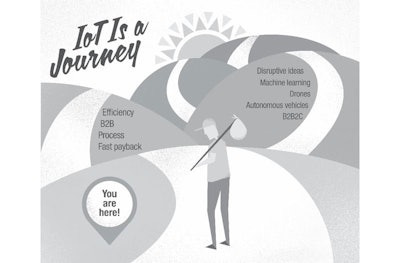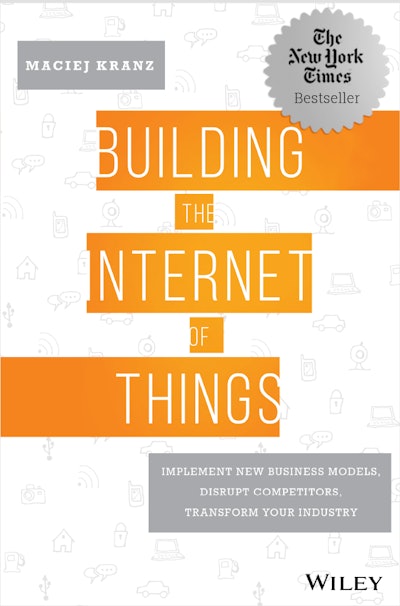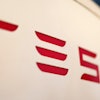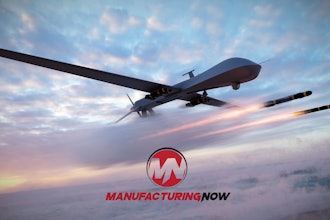
 Maciej Kranz
Maciej KranzPeople generally dislike change. It disrupts the familiar and the comfortable. Change forces you to rethink what were previously routine actions that required no new thought. It requires familiarizing yourself with new processes and procedures. In many cases, change requires the acquisition of new skills. It is, however, inevitable. Over time, everything changes. By the time we’re adults we understand this, even if we don’t like it, even if we don’t agree with the new direction that results from change. Some people may choose to resist a particular transformation, but resistance to change isn’t usually successful. In most cases, change is unavoidable because the world is dynamic.
IoT has emerged as both an agent of dramatic change and the result of global forces that drive change. Think of how the automobile ended the era of the horse and buggy, and then went on to reshape modern society in ways both good and bad, but mainly good. Can you even imagine what your life would be like if there were no automobiles or the automotive infrastructure that arose to support it? Similarly, the cloud and the Internet put an end to the era of proprietary computing, replacing it with Internet/cloud-centric information for everyone, anywhere, anytime. Just try to imagine how you would live and work without the Internet. At best, it would be a big stretch to maintain the same quality of life.
And now IoT has arrived, ushering in yet another era of radical business and social change. I’m sure many people a century and a half ago weren’t happy with the arrival of the automobile. But as soon as Henry Ford and a few others pioneered automobiles for the masses, there was no going back. IoT will drive changes of that magnitude, including revolutionizing the transportation industry again, and we have no choice but to adapt. But why settle for merely adapting? Let’s make the most of IoT.
Let’s try to capitalize on it as quickly and as much as we can. That’s why I wrote this book.
IoT Solutions
IoT solutions to common and sometimes not-so-common problems you may be experiencing are coming to your industry or area soon, if they aren’t there already. These are mainly variations on the four fast payback models that we’ve previously discussed. The African bank’s ATM solution is actually a variation of IoT-based remote operations and monitoring. All the bank needed was the fast, fog-based real-time analytics to translate sensor readings into an immediate realization that the initial stages of an ATM heist were underway and subsequently trigger instant alarms.
But specific IoT solutions or particular IoT technologies like fog computing and machine learning aren’t really what this book is about. It’s about almost exactly the opposite: business change. With IoT, you aren’t implementing a solution or a technology; you’re implementing a change in the business process. You have to start and finish by thinking about the business process and the changes to that process. In between there will be technologies, solutions, and ecosystem partners, all of them just a means to the end. What’s actually important is the impact delivered by business process change, and perhaps even business transformation. So approach IoT holistically; think about change in a business process, and about the change management required before you implement any technology.
I’ve seen this point repeatedly neglected, by both customers and vendors. In fact, too often the sole focus of the team developing a new IoT solution is on new technology. When the expected results don’t materialize, the answer usually lies in either not thinking through the new flash, alarms sound, and voice commands are barked out, generally leading to great confusion and panic. Before they even have time to place explosives and destroy the ATM, most thieves dash out and often are grabbed by the police as officers converge on the location from all directions. Thanks to IoT, the bank not only prevents a theft, which saves the money, but also preserves the ATM facility intact, which is worth more than any cash that may have been lost. This use of IoT proved to have a very good return on investment.
Building the Internet of Things technology in the context of the existing business process or not changing the business process to accommodate the integration of a new technology. Consider remote operations. The implementation of such a solution without a corresponding change in business process will lead to disappointing outcomes. You’ll have a great tool implemented in your plant, but unless you change how plant personnel manages assets, train them to use the new tool, and enforce the new behavior, you’ll just waste your money. If this is your first IoT project, your main hope for an early win, you’ll also jeopardize your organization’s broader IoT initiative. I know I sound like a broken record, but please think of technology solution and business process as two sides of the same coin. They must be approached together. And yes, as you may recall, “Integrate technology solutions with business processes” is one of the critical elements in my recipe for IoT success.
Organizations have faced big change before. Six Sigma asked everybody to change. Business process reengineering asked for big changes or, if not, for laying off lots of people. Managers were eager to let people go and boost their bottom lines, but they never quite followed through on the process changes. Lean manufacturing, integrated supply chain management, and enterprise resource planning were also going to change the organizations. Again, companies chalked up some exciting wins and Harvard Business School professors wrote impressive books, but most managers couldn’t realize the gains promised in those books—at least not on their own. I understand if you’re skeptical about deep business change and the paybacks possible through IoT. Unlike other books, however, I’m not asking you to do anything radical to start with.
What I’m really asking you to do is execute business change through the vehicle of IoT. Start by recognizing that IoT is neither a one-time event nor a single transition for your business; it’s a multi-year transformation that should deliver tangible paybacks with every step. IoT is a journey. As mentioned in the recipe for IoT success, you should “Prepare for a journey, not a one-time event,” and then be ready to reinvent yourselves as employees and managers, to reinvent your company, and to reinvent your entire industry every three to seven years. Think about the old computer game, The Oregon Trail, where early settlers packed all of their belongings, loaded them on the wagons, and left their old lives behind to find a better future. In that sense, the IoT journey (Figure 7.1) is a multi-year expedition across many peaks and valleys, and sometimes it may even feel like a rollercoaster ride.
 Figure 7.1 The IoT Journey
Figure 7.1 The IoT JourneyIt will be disorienting and exhilarating, anxious and delightful, scary and thrilling all at once. IoT is different from all of those other business transformation options; it’s not Six Sigma or BPR or Lean. Unlike them, you can’t ignore IoT and still expect to thrive or even survive.
Think about the fast payback ideas listed in Chapter 5. They focused on improving existing business processes, making them more efficient. And they’re likely to be your initial successes, your first IoT wave. Some will be opportunistic; most will be low-hanging fruit. Many will be focused on the B2B impact. But soon enough, these changes will lead to more disruptive ideas with deeper, more transformative impacts. Some of the disruptive technologies, such as machine learning, drones, autonomous vehicles, blockchain, and predictive context, will lead to the next IoT waves. Your business environments and your consumer experiences (also known as business-to-business-to-consumer or B2B2C) will change dramatically. Examples like the mass customization or even individualization of cars or motorcycles or enhanced shopping experiences will place consumers in the driver’s seat and, in the process, differentiate businesses that offer these capabilities. Not only will existing business operations be transformed but so, too, will business models. New value will be created; new business will be generated. Yes, it will indeed be a journey across many hills and valleys, starting from efficiency and leading to new ways of making money and delivering value to consumers. As soon as you conquer a hill in front of you, the next peak will appear, even more exciting and challenging.
With that in mind, the rest of this chapter will focus on change management in the context of IoT. You can expect to see different versions of the IoT-based enterprise coming to your organization or industry soon. For example, data scientists, plant engineers, and remote operators are already teaming up to centrally operate plants. In other cases, organizations are beginning to combine a variety of advanced technologies (like the ones we discussed at the end of the previous chapter). Among these technologies are immersive collaboration tools, as well as high-density Wi-Fi networks to visually captivate an audience and engage them interactively through a compelling mobile digital experience. Customers in every industry are ramping up their expectations, fast. They want convenience, personalization, and new opportunities and experiences. IoT brings the capabilities to deliver on these expectations sooner rather than later.
In every industry, endeavor, or activity, IoT will change how you operate and compete. It will do so sooner than you can undertake a typical three-year strategic plan. IoT will change worker, company, partner, and stakeholder experiences and expectations. As we discussed in the previous chapter, business processes, product development, support, customer service, go-to-market strategies, supply chain management and logistics, and more are changing as you read this book.
Excerpted from BUILDING THE INTERNET OF THINGS: Implement New Business Models, Disrupt Competitors, Transform Your Industry by Maciej Kranz. Copyright © 2016, Wiley.
 by Maciej Kranz
by Maciej Kranz





















